Compression socks can feel like medical jargon wrapped in fabric. The numbers printed on the packaging—such as 20–30 mmHg—are more than just technical specs. They tell you exactly how much pressure the socks provide and what kind of support your legs will get. In short, 20–30 mmHg is considered medium compression. It’s ideal for people with varicose veins, moderate swelling, travel-related DVT prevention, and even athletes seeking recovery support.
What Does 20–30 mmHg Mean in Compression Socks?
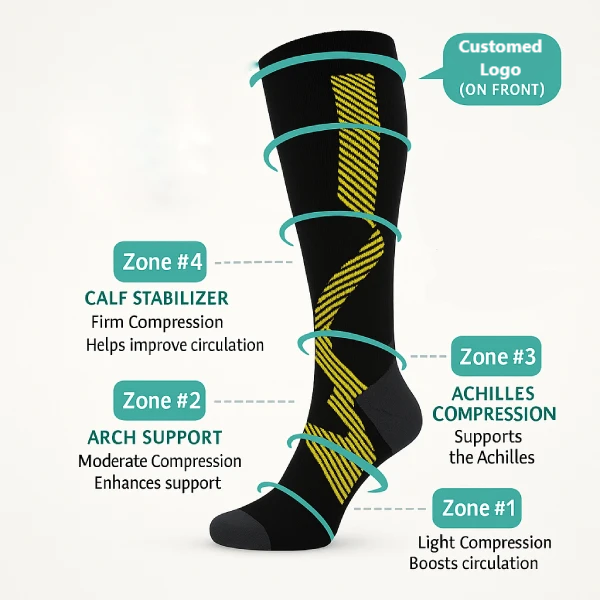
When you see 20–30 mmHg on a pair of compression socks, it’s describing the pressure strength. The unit “mmHg” stands for millimeters of mercury—the same measurement used in blood pressure readings. In compression garments, it tells you how firmly the fabric squeezes your legs to support blood flow.
In practice, 20–30 mmHg socks apply about 30 mmHg of pressure at the ankle and gradually decrease to around 20 mmHg at the calf. This design is called graduated compression. The tighter squeeze at the ankle and lighter squeeze up the leg create an upward push, helping your veins move blood back toward the heart.
The result? Better circulation, less swelling, and reduced pooling of blood in the lower legs. This makes the 20–30 mmHg range one of the most commonly prescribed compression levels: stronger than light support socks (15–20 mmHg) but not as intense as heavy medical stockings (30–40 mmHg or higher). It strikes the perfect balance between therapeutic benefit and everyday comfort.
20–30 vs 15–20 mmHg Compression Socks: Key Differences
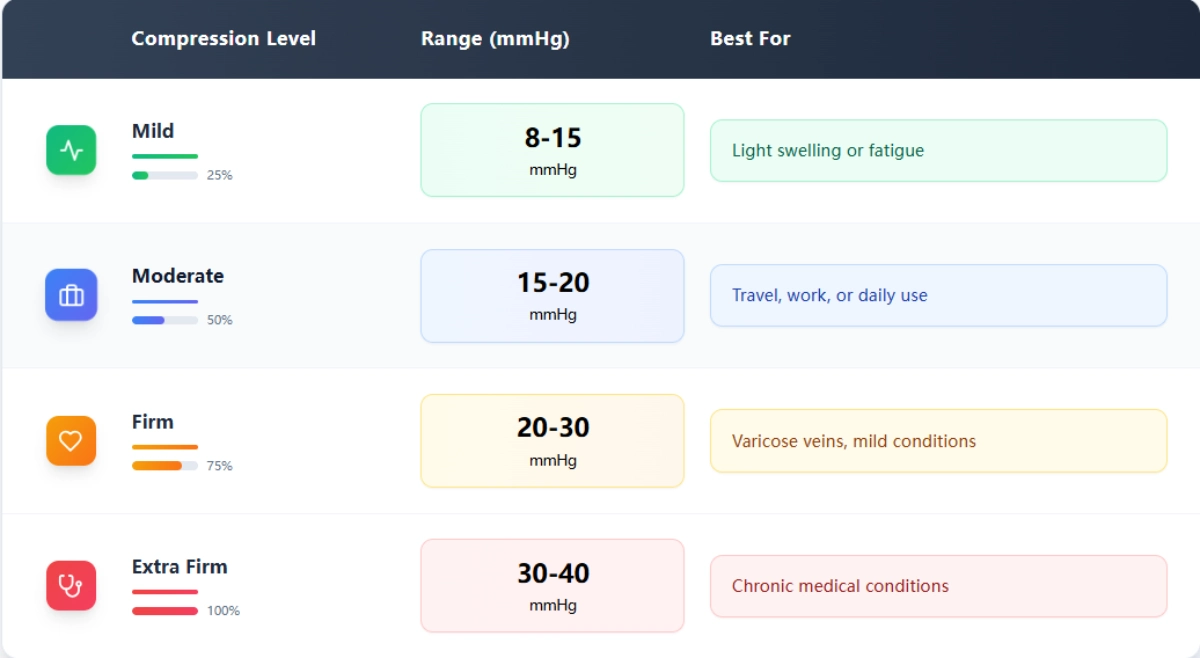
15–20 mmHg (light compression):
- Ideal for prevention and mild leg fatigue.
- Commonly used by travelers, office workers, and people with minor swelling.
- Comfortable for everyday wear, but often not strong enough for visible varicose veins.
20–30 mmHg (medium compression):
- Frequently recommended by doctors for varicose veins, moderate swelling, or recovery after vein treatments.
- Offers firmer support to improve circulation and control edema.
- A bit harder to put on, but provides stronger medical-grade benefits.
If you only need light support, 15–20 mmHg is often enough. But if your symptoms go beyond “tired legs,” 20–30 mmHg usually delivers the right balance between comfort and therapeutic effect.
👉 For a full comparison with detailed scenarios, see our in-depth guide on 20–30 vs 15–20 mmHg compression socks.
Graduated Compression: The Pressure Profile of 20–30 mmHg Socks
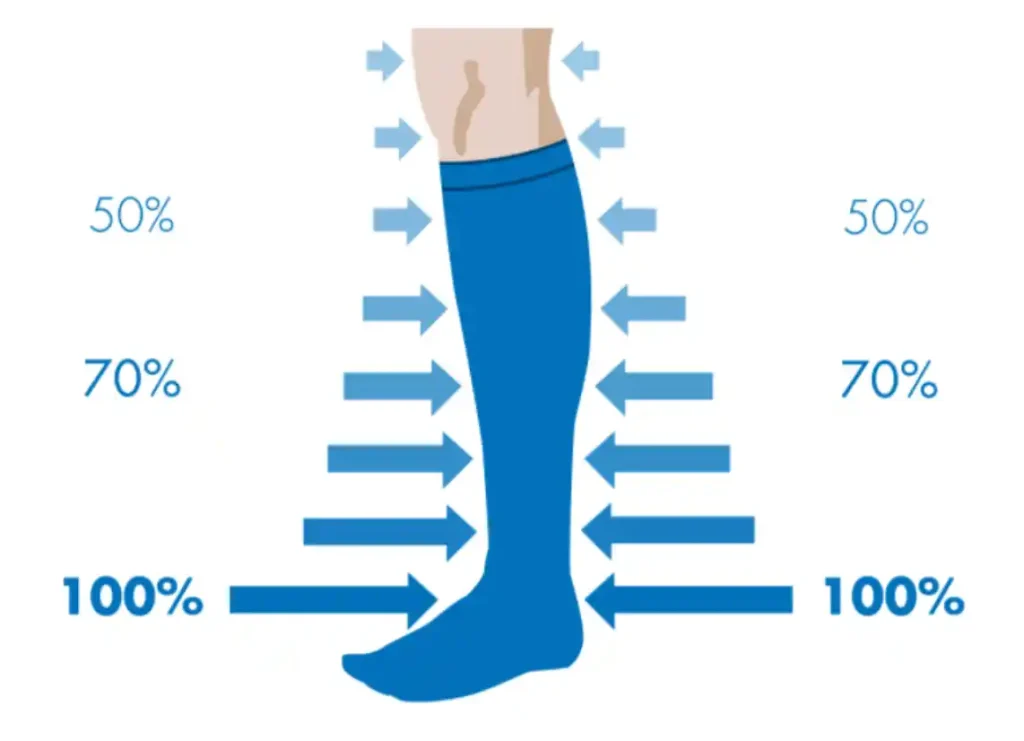
Pressure Gradient Explained
Graduated compression means the highest pressure at the ankle, decreasing in steps toward the calf. A 20–30 mmHg sock typically delivers 30 mmHg at the ankle, 25 mmHg mid-calf, and 20 mmHg just below the knee. This gradient creates a pressure slope that guides blood—along with excess interstitial fluid—upward, countering gravitational pooling.
Therapeutic Importance of the Gradient
By concentrating force at the ankle, graduated socks tackle the point of greatest venous pressure first. As fluid moves upward, the next, slightly lower pressure zone continues the push, creating an uninterrupted flow. This cascading action reduces swelling progressively and supports steady circulation, key for managing moderate edema or varicose symptoms.
How 20–30 mmHg Socks Apply This Pattern
Manufacturers calibrate yarn tension and knit structure to achieve the target gradient. In the 20–30 mmHg class, yarn density is highest at the foot and ankle section. As the sock extends, the stitch count or fiber elasticity decreases to deliver the prescribed taper. Quality brands test each production batch to confirm the graduated profile meets medical standards.
Who Should Wear 20–30 mmHg Compression Socks?
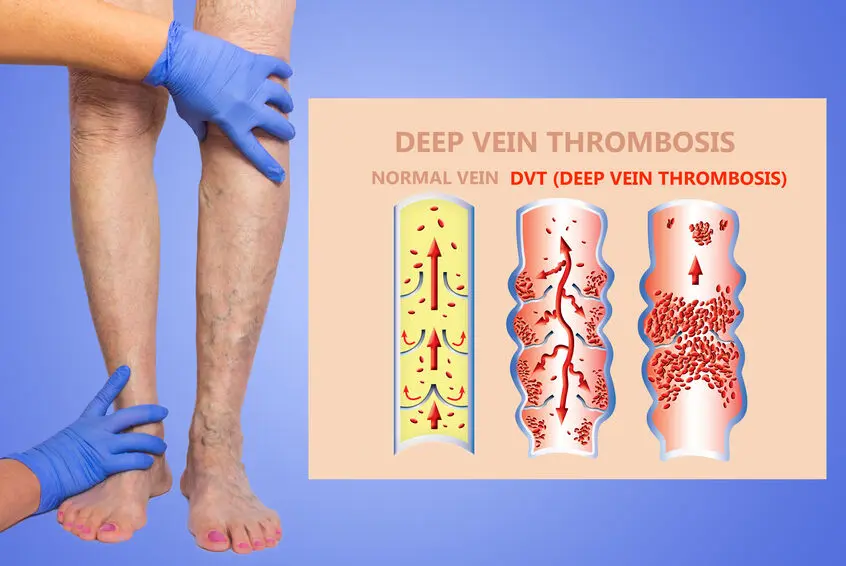
20–30 mmHg compression socks are considered “medium strength”—not for casual prevention, but highly effective for people who need stronger support. Doctors often recommend them for:
- Varicose veins and spider veins – to ease heaviness, reduce bulging, and slow disease progression.
- Moderate swelling (edema) – in the ankles, calves, or feet, especially if it develops daily.
- DVT prevention – ideal for frequent flyers, post-surgery recovery, or anyone with a history of blood clots.
- Chronic venous insufficiency (CVI) – in mild to moderate stages, to improve circulation and reduce complications.
- Pregnancy-related swelling – helpful in the second or third trimester, but always under medical guidance.
- Active lifestyles and athletes – to support muscles during running or workouts and speed up recovery afterward.
💡 Tip: If your legs only feel mildly tired or slightly swollen, you may not need medium compression. In that case, 15–20 mmHg compression socks could be a more comfortable daily option.
Benefits of 20–30 mmHg Compression Socks
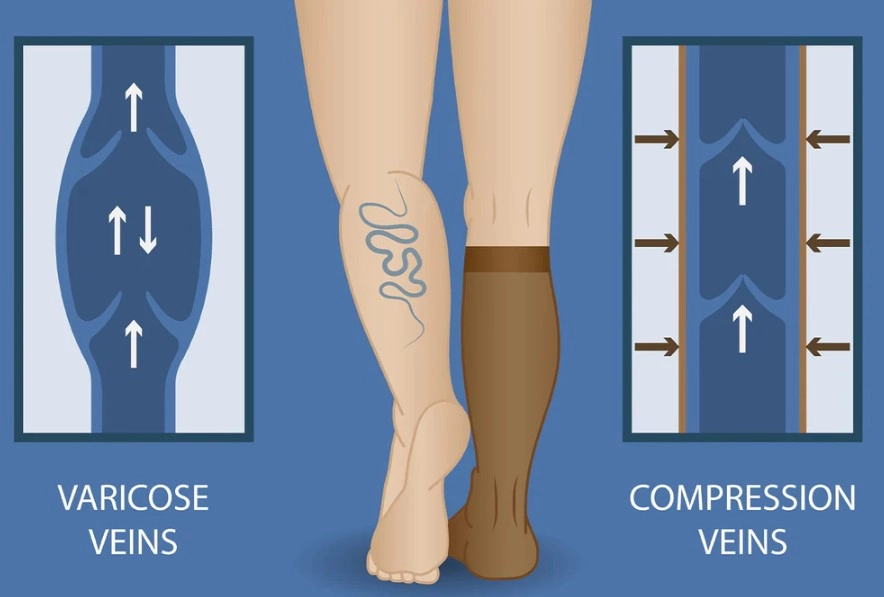
Swelling & Varicose Veins
Medium compression helps vein valves stay closed, preventing backflow and reducing visible bulging from varicose veins. It also pushes excess fluid back into circulation, which can noticeably reduce ankle and calf swelling throughout the day.
Travel & DVT Prevention
During long flights or car rides, sitting still for hours slows circulation and raises the risk of deep vein thrombosis (DVT). Wearing 20–30 mmHg socks improves blood flow, prevents pooling in the lower legs, and keeps your legs feeling lighter and more comfortable while traveling.
Sports & Recovery
Athletes and runners often use this compression level to stabilize calf muscles, reduce vibration during movement, and boost oxygen delivery. After intense training, medium compression helps clear lactic acid, ease soreness, and speed up recovery so you can return to activity sooner.
Pregnancy Support
Expectant mothers frequently experience ankle swelling and pregnancy-related varicose veins. 20–30 mmHg socks provide extra support and help prevent symptoms from worsening. Always consult a healthcare provider before using medium compression during pregnancy to ensure safety.
How to Wear 20–30 mmHg Compression Socks Safely
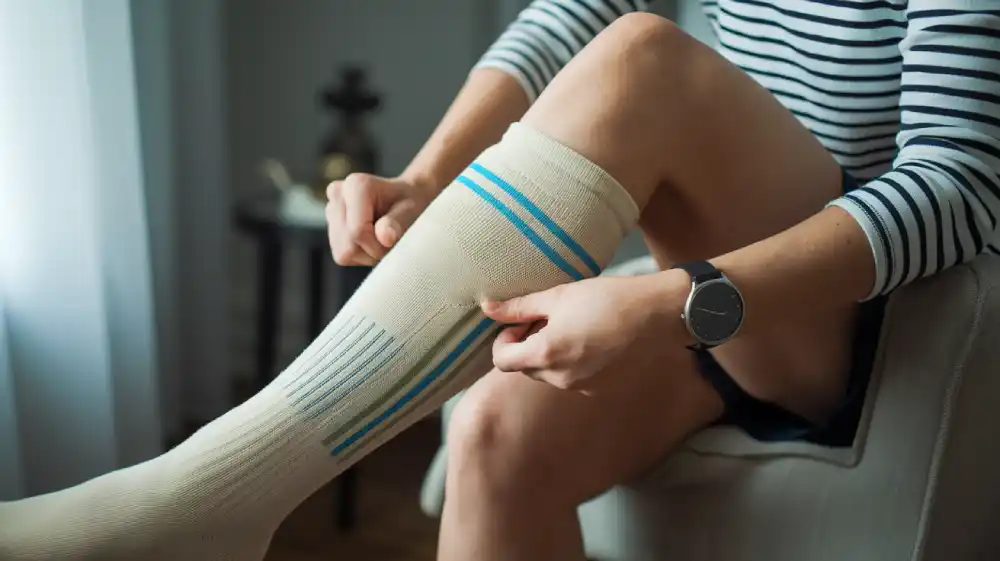
Wearing medium-compression socks the right way ensures maximum benefit and avoids discomfort. Here’s a step-by-step guide:
Step-by-Step Instructions
- Measure correctly – In the morning, measure your ankle and calf circumference. Proper sizing is crucial for comfort and effectiveness.
- Put them on early – Slip the socks on right after waking, before swelling develops in your legs.
- Position carefully – Pull the sock up slowly, smoothing wrinkles as you go. The heel should align properly, and the fabric should sit flat against the skin.
- Avoid folding or rolling – Never roll the top band down, as it can cut off circulation like a tourniquet.
- Wear during the day – Keep them on while standing, sitting, working, or traveling. Remove them at night unless your doctor advises otherwise.
- Use aids if needed – Donning gloves, sock pullers, or frames can make application easier and extend the life of your socks.
Quick Safety Tips
- Consistency matters: daily wear brings the best results for swelling, varicose veins, or DVT prevention.
- Always replace worn-out or overstretched socks—old pairs lose their compression strength.
- If you feel numbness, tingling, or pain, remove the socks and recheck your sizing.
FAQ: Common Questions About 20–30 mmHg Compression Socks
Are 20/30 mmHg compression socks too much?
No. 20–30 mmHg is medium compression, commonly used for varicose veins, swelling, and DVT prevention. If they feel painful or restrictive, check sizing or consider 15–20 mmHg.
What does 20–30 mmHg mean?
It refers to millimeters of mercury (mmHg), a pressure unit. These socks apply about 30 mmHg at the ankle and 20 mmHg at the calf, creating graduated compression to improve circulation.
What’s the difference between 20/30 and 30/40 compression socks?
20–30 mmHg suits moderate swelling, varicose veins, or travel. 30–40 mmHg is firmer, prescribed for severe venous disease, lymphedema, or ulcers, and should be used under medical guidance.
What’s the best mmHg for compression socks?
It depends on your needs. 15–20 mmHg is good for prevention, 20–30 mmHg for most therapeutic use, and 30–40 mmHg+ only for severe medical conditions under a doctor’s advice.
Can you sleep in 20/30 compression socks?
Usually no. Compression socks are for daytime wear when standing or sitting. Only wear them at night if your doctor specifically prescribes it, such as after surgery.
Conclusion
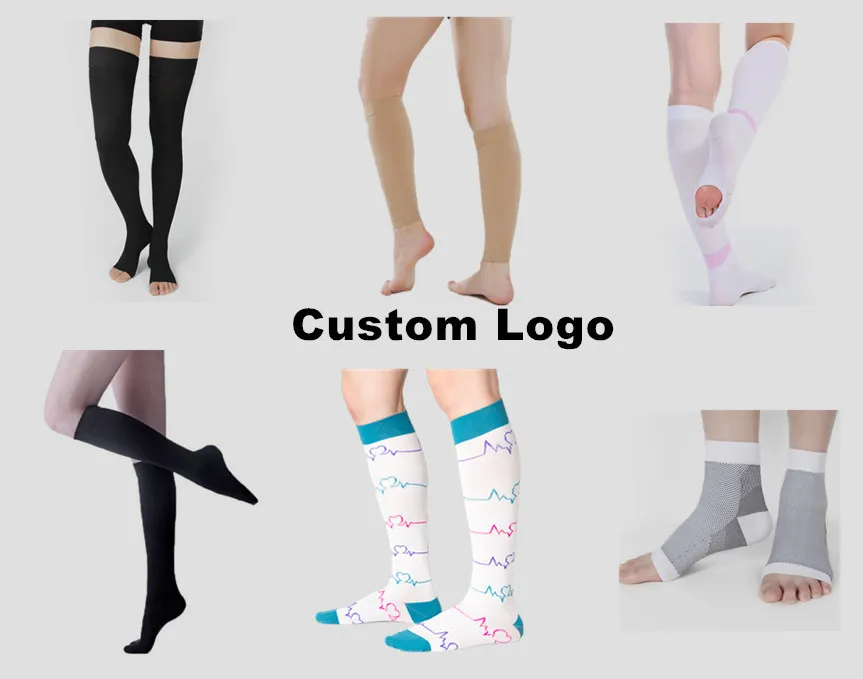
20–30 mmHg compression socks are the sweet spot of medium compression—strong enough to manage varicose veins, swelling, and circulation issues, yet comfortable enough for daily use. They can support recovery after treatment, lower the risk of DVT during long travel, boost performance for athletes, and ease pregnancy-related leg discomfort.
The key to getting the full benefits lies in choosing the right size, wearing them consistently, and seeking medical guidance when needed.
👉 Ready to experience the difference? Explore the Max Hosiery 20–30 mmHg compression collection for trusted quality, reliable support, and all-day comfort backed by medical expertise.
